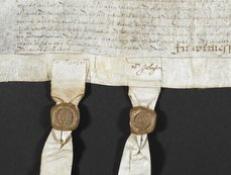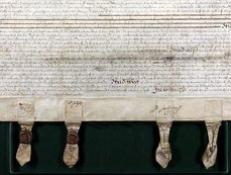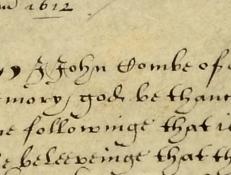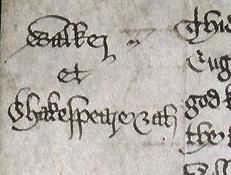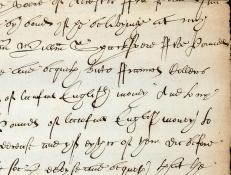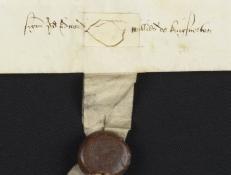To view a sortable list, please visit the Resource
All Documents
June 19, 1612
Shown here is the second round of depositions, dated June 19, 1612, given in Bellott v. Mountjoy.
June 23, 1612
Shown here is the third round of depositions, dated June 23, 1612, given in Bellott v. Mountjoy.
Easter term 1612
Shown here is the Witness Book, from Easter term 1612, for the first round of depositions in Bellott v. Mountjoy.
March 11, 1613
In March 1613 William Shakespeare and three associates agreed to purchase the Gatehouse of the former Dominican priory in London known as “Blackfriars” from Henry Walker for the sum of £140. The indenture of bargain and sale is dated March 10.
March 10, 1613
In March 1613 William Shakespeare and three associates agreed to purchase the Gatehouse of the former Dominican priory in London known as “Blackfriars” from Henry Walker for the sum of £140. The indenture of bargain and sale is dated March 10.
March 10, 1613
In March 1613 William Shakespeare and three associates agreed to purchase the Gatehouse of the former Dominican priory in London known as “Blackfriars” from Henry Walker for the sum of £140. The indenture of bargain and sale is dated March 10.
January 28, 1613
The registered copy of John Combe’s will, shown here, carries the date of January 28, 1612 [i.e. 1613] in a heading which may give the impression of concluding the preceding will.
April 23, 1613
In March 1613 William Shakespeare and three associates agreed to purchase the Gatehouse of the former Dominican priory in London known as “Blackfriars” from Henry Walker for the sum of £140. The indenture of bargain and sale is dated March 10.
January 28, 1613
John Combe of Stratford-upon-Avon was a contemporary of William Shakespeare. Though Combe was from a far wealthier and more established family, by the second decade of the seventeenth century Shakespeare’s accumulated wealth placed the two men on an essentially equal footing.
January 22, 1613
John Shakespeare’s property in Henley Street, inherited by his son William in 1601, and now known as the Birthplace, had a frontage of about 90 feet. When an urban property changed hands, its boundaries were often defined by reference to neighboring properties.

![REQ 4/1/4/2 [1], thumbnail detail](https://shakespearedocumented.folger.edu/sites/default/files/styles/document_thumbnail/public/document-thumbnails/REQ4-1-4-2%20%281%29%20The%20Belott%20v%20Mountjoy%20suit%2C%20deposition%20of%20Daniel%20Nicholas%201612_thumbnail%20detail.jpg?itok=qLDPDvNb)
![REQ 4/1/4/3 [1], thumbnail detail](https://shakespearedocumented.folger.edu/sites/default/files/styles/document_thumbnail/public/document-thumbnails/REQ4-1-4-3%20%281%29%20The%20Belott%20v%20Mountjoy%20suit%2C%20deposition%20of%20Christopher%20Weaver%201612_thumbnail%20detail.jpg?itok=CccGcAQB)

